1809
NOVEL ARCHITECTURE OF CLOUD
COMPUTING FOR INTERNET OF THINGS
1CHETNA DABAS
1Asst Prof, Jaypee Institute of Information Technology, Department of Computer Science, India
E-mail: chetna.dabas@jiit.ac.in
ABSTRACT
In the years to come, futuristic research and business opportunism will hugely rely on the fusion of two very popular technologies called Cloud Computing and Internet of Things. The victory of Internet of Things seeks for service accessories consisting up of crucial parameters like reliability, scalability, ubiquity, good performance to name a few. This further demands cloud computing to be in place for the concrete support of the Internet of Things paradigm. Cloud Computing is weaved with in-built intellect support for the integration with Internet of Things and on the other hand cloud environment aims at boosting up of the Internet of Things scalability and cost factors in great ways. This research paper presents review of literature, surveyed practices, points out research issues in the above context, and proposes a novel fused architecture of Cloud Computing for the Internet of Things technology, validates the proposed architecture while implementing an application using IOT devices and Google Cloud, compared the proposed work for MQTT protocol with the existing work and performs better than it, further, in another existing work the cloud component was completely missing whereas it is embedded in the proposed architecture for offering scalability in the Internet of Things scenario, at last this research paper concludes with the open research issues and assumptions along with limitations of the proposed work.
Keywords: Internet of Things, Cloud Computing, Architecture, Applications, Games
1. INTRODUCTION
The Internet of Things (IoT) [1] is getting wide attention across the world in the present scenario and relies on interconnected smart objects which are huge in number and intelligent in nature.
The Internet of things is perceived as an ecosystem which is build up of a number of physical objects connected through Internet. There exist embedded technology capabilities in these IOT devices which enables these devices to carry interaction with the outer environment or with their internal states.
These IOT devices have normally limited processing and storage capability. There are various standards listed for these IOT devices [2].
The issues associated with IOT systems include security, design of architectures, reliability, performance to name a few [3, 4, 5].
In the present scenario, the content of the internet may be accessed in an independent fashion in relation to the associated infrastructure.
On the other hand, the building blocks of the cloud infrastructure consist up of data centres. In the cloud computing scenario, the content vendor provides the maintenance and monitoring for the data centers in the cloud infrastructure.
Cloud computing may be considered as a technique of offering services, platform and infrastructure in order to further boost the potential of business applications.
These business applications may be accessed on a network and are offered as sophisticated services to the users. The users of these services are charged for using them [6].
1810 by the existing studies, both these technologies if fused together may ignite revolutions in the future internet [7].
[image:2.612.86.297.231.580.2]Referring to the latest search of the two significant titles as Internet of Things along with Cloud Computing, as revealed by a graph plot of data from the website of Google Trends (https://trends.google.com) in Figure 1, the relative popularity may be observed corresponding to the IoT and Cloud Computing.
Figure 1.Relative popularity of search strings “Internet of Things” and “Cloud Computing” (2018-2019):
Google Trends Search
When it comes to Internet of Things communication, there are a number of them for example; Constrained Application Protocol (CoAP), Hyper Text Transfer Protocol (HTTP), Advanced Message Queuing Protocol (AMQP), Extensible Messaging and Presence Protocol (XMPP) and Message Queuing Telemetry Transport Protocol (MQTT) to name a few.
For applications which are based upon tiny IOT devices where there can be huge text oriented overheads, HTTP may be quite heavy. XMPP protocol has huge requirements in terms of memory space desired by the already constrained IoT devices. CoAP protocol makes usage of the REST architecture and it is alike HTTP. IIt was designed for removing uncertainty when compared to HTTP using its delete, put mechanisms. CoAP although is used amongst many IOT researchers possesses stress on the constrained devices with the usage of consistent polling process.
The AMQP was designed for combining the various gadgets which are used to save and route different messages using a group of policies. The broker of AMQP interacts with the publisher on one end and the queues at the other end. AMQP communication protocol is assumed to be less suitable for device to device communication. MQTT is supposed to be quite appropriate where there are small footprints, where one can avoid the overhead of queues and works well for the devices which are constrained in nature.
Moreover it has the capabilities to handle numerous devices, maintains consistency to lower latency. Further, it has minimum bandwidth requirements with lots of other easy to implement attracting features which makes it highly suitable for a wide variety of Internet of Things applications [8, 9, 10].
The research execution protocol utilized in this research work is MQTT protocol. It is based on Representational State Transfer (REST) architecture. It is a single layer protocol which runs on TCP and ahs three qualities of service layers and it supports Publish and Subscribe framework [11].
MQTT protocol is quite capable to connect the complex and heterogeneous Internet of Things environment (containing both constrained as well as unconstrained IoT devices) to the layered cloud environment [12].
Organization of the research paper is as follows: Literature survey for the fusion of IoT and Cloud Computing is presented along with essential ingredients is described in the next Section.
1811 applications for the proposed scenario are discussed.
Then validation of the proposed architecture while considering a case application has been done. Further, research challenges popping from the fusion of these two technologies are discussed.
Then with the support of all the above carried out steps, future directions are presented with ease. After that, the limitations and assumptions of the proposed work are discussed and open issues are discussed. The paper closes with conclusions.
[image:3.612.92.291.314.650.2]The flow of methodology followed here in this research work is presented in Figure 2 which is self explanatory.
Figure 2.Diagram for the Flow of Methodology
The flow of methodology starts with the recent literature survey in the area and then moves on while presenting the applications. Further, novel
fused architecture is presented, and then validation of the proposed architecture is carried out using an application and specified architectural components of the proposed architecture. Research challenges are presented after that, further limitations and different open issues are discussed.
2. LITERATURE SURVEY AND
ESSENTIAL INGREDIENTS FOR FUSION
The Internet of Things can leverage benefits to the Cloud by providing a direct access to the real world objects or things. This can be achieved in a dynamic, distributed and controlled ways.
Cloud can further provide a layer of abstraction between the applications and real world objects for the benefit of the user to further create a more strong balance between usability and scalability [13, 14, 15]. This is further going to open a bag full of opportunities for the applications going to be developed in future.
The Internet of things is built up of architectural components like hardware and software devices, protocols, communication technologies, which are heterogeneous in nature.
Further there are certain crucial issues associated with the Internet of Things technology which needs to be addressed like reliability, availability, scalability, efficiency, cost, performance, security to name a few.
Cloud computing technology has brilliant ways to address some of these issues to a larger extend [16, 17, 18, 19, 20, 21].
Table 1 addresses the contrasting features of both IoT and Cloud computing which forming essential ingredients for the fusion of IoT and Cloud Computing mechanisms in order to extract the maximum benefits.
The attributes of this Table 1 include Feature Description, Internet of Things and Cloud Computing.
Table 1.Contrasting Features: Internet of Things
1812
Feature Description
Internet of Things
Cloud Computing
Prime
Components Real World Things and resources
Virtual Things and resources
Cost Heavy Low
Big Data Prime Source Ways to handle Computing
Power
Slender Inexhaustible (virtually)
Internet Coupling
medium distribution Service medium Arrangement Ubiquitous Centralized
Storage
Capacities Slender Inexhaustible (virtually)
3. APPLICATIONS
Amongst a vast variety of applications, few existing applications of Cloud Computing technology utilized for Internet of Things are presented in Figure 3 which is self descriptive and of vivid variety.
[image:4.612.117.284.414.624.2]I.
Figure 3.Applications for Internet of Things and Cloud Computing
In the past, there have been evidences supporting the possibilities of fusion of Internet of Things and Cloud computing technologies [26]. In
the present scenario, Internet of Things is getting melded with other technologies to form a lucrative combo delivering huge benefits [27].
There are numerous applications that support the fusion of two technologies namely cloud computing and Internet of Things for example pervasive healthcare, multi-layer vehicular networks, smart homes, detection of real time attacks to name a few. Some of them are presented in this section.
Applications in pervasive healthcare [28] make excess use of sensor data which requires management and storage for processing and analysis. This may be of extensive use in future.
The authors of this paper clearly state the possibilities of melding up of the two cloud computing technology and Internet of things technology giving benefit of efficiently handling up of sensor data online.
The authors have proposed a platform which relies on Cloud Computing for dealing with the healthcare sensors (wearable) which are mobile in nature, and Internet of Things technology is performed on pervasive healthcare.
One of the applications in multi-layer vehicular data is designed using cloud and Internet of Things technologies while addressing the issues generated as a result of the rising transportation hurdles [29].
Here, for vehicle warranty analysis in the Internet of Things scenario, two of the vehicular data associated with cloud services along with a parking service which is of cloud nature (intelligent).
Also, one data mining service which is again of cloud nature is utilized. This research works on the popular Naive Bayes and Logistic regression techniques. This work can be a motivation for the users in designing innovative, efficient and cost effective applications.
Another application making a melded use of the two technologies is presented by the authors of a recent work [30].
1813 AVISPA and BAN logic along with the performing of cryptanalysis.
This recent application ignites interest in the research community of the users which want to extract benefits of both the technologies.
One more recent application which is based on the processing of scalable senor data in the fused environment has come up [31]. Here, the application has been designed for secured and smart healthcare monitoring system which is also responsible for generating alerts.
This work makes use of Apache Pig software and Apache HBase in the context of the sensor data. The proposed model is helpful in the prediction of heart diseases.
Seamless interactions on multi-layer cloud and in heterogeneous Internet of Things smart home environment is method proposed in one of the recent research work [32]. In this work, an architectural model which is multi-layer cloud based, is proposed to enhance effectiveness and seamless interactions with varying Internet of Things devices pertaining to smart homes.
One more recent application allows the melding of cloud technology and Internet of Things paradigm with blockchain technology [33] which allows low latency access to big data and that too in a secured way. Detection of real-time attacks pertaining to the Internet of Things scenario which uses Fog nodes is possible with this work. Also, the performance in terms of overhead is low in this work.
For the management of applications in the Internet of Things environment where fog-based smart city network is available, a model has been designed for resource allocation to allow communication amongst different types of components [34]. The good thing is that the evaluation of the proposed work has been carried out on real time datasets.
For an Internet of Things based healthcare system which is placed in a cloud scenario, there is a recent work that proposes a centralized architecture which is secured and efficient [35].
The main focus of the proposed research work is to provide authentication which is secure along with authorization of devices pertaining to the
Internet of Things environment. Here, the communications amongst these objects, transfer of data in between the applications of remote healthcare systems and the data servers, all happens in the cloud environment.
4 PROPOSED FUSED ARCHITECTURE OF CLOUD COMPUTING FOR INTERNET OF THINGS
The proposed architecture melded with the goodness of the Internet of Things and Cloud Computing technologies is presented in Figure 3. Figure 3 is self explanatory. It consists of the IOT architectural components primarily smart devices communicating with the cloud formed with virtual private network to leverage the benefits of both the worlds.
The prime components of the proposed architecture may be (but not limited to) smart phone, laptop and raspberry pi 3, graphical processing units, RFID reader, television screen, wifi module. These devices collect data and passed on to the internet.
Here, the cloud platform provides the communication application programming interface. The managing python script has interaction with a designed application which offers visualization to other applications.
The cloud infrastructure leverages resources for the deployment of web applications which further are able to communicate with the various diverse types of Internet of Things devices and the other external environment.
Each type of communication that takes place between the Internet of Things and Cloud carries unique identification along with encryption. The users can be benefitted from this architecture while consuming the benefits of both the technologies namely Internet of Things and Cloud computing.
1814
Figure 4.Proposed Fused Architecture: Cloud Computing for Internet of Things
5 VALIDATION OF THE PROPOSED ARCHITECTURE
5.1 Application Background
In an Internet of Things environment, weather it is a mini computer (Raspberry pi 3) or be it a Graphical Processing Unit, or central processing units bear significant roles while evaluating the performances during heavy computations.
The temperature of these devices plays a crucial role in the performance of Internet of Things systems with simple as well as complex applications. Therefore, an application has been designed and tested which utilizes the Internet of Things device temperature data to get published on their measuring supplies.
Here, on the cloud side, the gamming application server consumes this data form a Google cloud because the Google cloud comes with an advantage of bringing reliability and scalability of the associated middleware interface as well.
On the IoT side, one of the application modules is responsible for switching the Internet of Things (IOT) device/object fan off or on. Here, the IOT devices under consideration were a GPU (graphical processing unit) namely, Geforce GTX 670 model of NVIDIA Company with 2GB memory. These may be replaced by other Internet of Things device from different vendors as well, which consists up of a fan.
5.2 Application Flow
Here, in this work, the communication took place with the help of MQTT [8] protocol. The IOT device communicated with the fused cloud and Internet of Things while utilizing the MQTT protocol.
When the IOT device (using a sensor) a higher temperature above threshold value after heavy data computation, and the gamming application server wanted to check the status of the fan, then, the fused (cloud and Internet of things) environment published the temperature value and other metadata on the cloud on the registry of the IOT device.
This data was obtained from the cloud by the application server.
After checking the temperature threshold values the IOT device configuration gets updated using MQTT and the status of fan and its RPM value. Further, this is applicable to all the devices which are there in the cloud computing for IoT and require cooling attention.
Common instructions may be sent broadcasted to all such devices on the cloud for improved performances of various kinds of diverse systems.
5.3 Results
Validation of the proposed architecture was carried out by analyzing the performance of 6 existing games running on heterogeneous Internet of Things devices connected through a cloud.
Figure 5 is a result snapshot depicting the performance of different games in cloud computing for internet of things environment for the proposed architecture.
1815 delays using MQTT in the Internet of Things and Cloud scenario has been presented in Figure 6. Further, this work has been compared with the existing literature [9].
The IOT devices used in the existing literature for comparison are Ardunio, Raspberry Pi whereas in the proposed work the IoT devices are Raspberry Pi 3 connected with IoT device containing sensor and General processing Unit.
Further it has been observed as a part of this work that the delays are significantly reduced for the proposed work. Moreover, in [38] a recently proposed IoT architecture, the fusion and integration of Internet of Things with Cloud is found to be completely missing which is presented in the proposed work.
The comparison of proposed work and existing literature [9] for MQTT protocol in the cloud computing and Internet of Things environment has been carried out in Figure 7.
[image:7.612.311.525.70.398.2]REFRENCES:
Figure 5.Results for performance of games in Cloud Computing for Internet of Things Environment
Figure 6.Token and Access Delays in Cloud Computing for Internet of Things Environment for
various device platforms
Figure 6 presents the performance in terms of token as well as access delays corresponding to different architectural components of the proposed fused architecture.
Here, the values corresponding to the
raspberry pi along with the IoT device with sensor is displayed in blue color, the values with respect to the Graphical Processing unit (GPU) is reflected in the red color and the values for the Web browser are presented in green color.
[image:7.612.92.299.370.665.2]1816
Figure 7.Token and Access Delays comparison for proposed and existing [33] work for MQTT
protocol
6 RESEARCH CHALLENGES
Apart from the various benefits which come as an added advantage with melding of both Could Computing and Internet of Things, there are some prime research issues which require attention.
Some of them are performance, Fog Computing, Polyglot approaches to distributed databases and adaptability to a large number of heterogeneous devices and reliability. Three of them are discussed in detail as under.
6.1 Fog Computing
As Fog is close to the ground in comparison with the clouds, so is Fog Computing as compared with Cloud Computing. Specifically, Fog Computing has location awareness and edge location which directly implies latency which is low. Moreover, Fog Computing can contain highly huge number of nodes with a shore up real time communication and mobility.
Working on Fog Computing for Internet of Things is still more taxing. Moreover, here traditional methods of cloud computing like those of handling heterogeneous devices or reliability or load balancing concerns may not work and may further seek more demanding methods in the concerned area.
6.2 Polyglot approaches
To work with multiple instances to different kinds of distributed databases (including both SQL and NoSQL) in Cloud Computing for Internet of Things has added complexity to the situation which still is a research challenge and requires concrete workable integration with intelligent environment.
6.3 Adaptability to heterogonous devices
1817 numerous numbers of customized micro services accessible now a days.
7 FUTURE VISIONS
The full exploitation of Cloud Computing for Internet of Things will be when further research support is provided to work on the integrity and security of such heterogeneous systems while handling big data especially in context oriented services.
Further, to deal with virtually unlimited resources while providing ease and usability to the user is one more thing still requires a lot of research work and validations. Performance and efficiency boosting in such type of systems have still a long way to go as far as real time systems are concerned [37]. Integration of Internet of Things systems with other technologies like fog computing, cloud computing and blockchain technologies considering polyglot approaches in databases takes the vision in future directions.
8 LIMITATIONS AND ASSUMPTIONS
It is assumed in the present work that all of the architectural IoT devices under consideration (after the embedding of its respective identification number) are prevented from any sort of physical intrusion. The limitations of the proposed work include the maintenance of integrity of data in such complex heterogeneous scenarios and execution of heavy traditional encryption oriented protocols like Transport Layer Security and its predecessor protocol namely Secure Socket Layer may not be possible with the hardware architecture under consideration.
9 OPEN ISSUES
In lieu of the limitations above, some of the open research issues remain the sensing of the fused Internet of Things and Cloud environment in terms of communication security which involves heavy Transport Layer Internet of Things protocols. Further at the network layer, technologies like block chain are yet to be fully imbibed into such environments for optimal performances.
10 CONCLUSIONS
There lie huge opportunities in the melding up of Cloud Computing with Internet of Things together. This combination is
desperately desirable in both the research and business worlds in coming future. This research paper explored the literature aspects of Cloud Computing for Internet of Things along with the essential ingredients for melding of these two technologies.
Further, a fused novel architecture for Internet of Things and Cloud Computing has been proposed and validated as a part of this work. Due to the fact that the Cloud Computing for Internet of Things has opened a magical box for several future applications, this research paper also surveyed prime research challenges to explore research directions for future.
Recent applications for Cloud Computing for Internet of Things like those related to pervasive healthcare, smart homes, scalable sensor data, prediction of heart diseases, detection of real time attacks, fog based smart-city network, were also surveyed while highlighting their main facets and exposing their open issues and research pointers for future.
Moreover, the research challenges associated with these kinds of applications in Cloud Computing for Internet of Things scenario were analyzed like Fog Computing, Polyglot Approaches, and Adaptability to heterogeneous devices.
Assumptions and limitations of the proposed work are discussed. The limitations included maintain integrity and security of large scale data in such kind of heterogeneous scenario while handling virtually unlimited resources especially in context oriented data, concrete support for performance and efficiency maintaining low cost and defining new standards for the communications, software and hardware support.
Open research issues are discussed.
REFERENCES
[1] Gershenfeld N, Krikorian R, Cohen D. The internet of things. Scientific American. 2004 Oct 1;291(4):76-81.
[2] https://pdfs.semanticscholar.org/presentation/c d2f/6a310eaf7e151d7bf10b273ad03125fb5c6e. pdf
1818 [4] Rose, K., Eldridge, S., & Chapin, L. (2015).
The internet of things: An overview. The Internet Society (ISOC), 1-50.
[5] Sheth, A. (2016). Internet of things to smart iot through semantic, cognitive, and perceptual computing. IEEE Intelligent Systems, 31(2), 108-112.
[6] Buyya R, Yeo CS, Venugopal S, Broberg J, Brandic I. Cloud computing and emerging IT platforms: Vision, hype, and reality for delivering computing as the 5th utility. Future Generation computer systems. 2009 Jun 1;25(6):599-616.
[7] Chang KD, Chen CY, Chen JL, Chao HC. Internet of things and cloud computing for future internet. InSecurity-enriched urban computing and smart grid 2011 (pp. 1-10). Springer, Berlin, Heidelberg.
[8] http://mqtt.org/documentation
[9] Niruntasukrat, A., Issariyapat, C., Pongpaibool, P., Meesublak, K., Aiumsupucgul, P., & Panya, A. (2016, May). Authorization mechanism for mqtt-based internet of things. In Communications Workshops (ICC), 2016 IEEE International Conference on (pp. 290-295). IEEE.
[10]Silva, B. N., Khan, M., & Han, K. (2018). Internet of things: A comprehensive review of enabling technologies, architecture, and challenges. IETE Technical Review, 35(2), 205-220.
[11]Ammar, M., Russello, G., & Crispo, B. (2018). Internet of Things: A survey on the security of IoT frameworks. Journal of Information Security and Applications, 38, 8-27.
[12] https://cloud.google.com/iot/docs/how-tos/mqtt-bridge
[13]Nastic S, Sehic S, Le DH, Truong HL, Dustdar S. Provisioning software-defined IoT cloud systems. In2014 2nd International Conference on Future Internet of Things and Cloud (FiCloud) 2014 Aug 1 (pp. 288-295). IEEE. [14]Truong HL, Dustdar S. Principles for
engineering IoT cloud systems. IEEE Cloud Computing. 2015 Mar;2(2):68-76.
[15]Bassi A, Horn G. Internet of Things in 2020: A Roadmap for the Future. European Commission: Information Society and Media. 2008 Sep 5;22:97-114.
[16]Fox GC, Kamburugamuve S, Hartman RD. Architecture and measured characteristics of a cloud based internet of things. In2012 international conference on Collaboration Technologies and Systems (CTS) 2012 May 21 (pp. 6-12). IEEE.
[17]Ray PP. A survey on Internet of Things architectures. Journal of King Saud University-Computer and Information Sciences. 2018 Jul 1;30(3):291-319.
[18]https://www.postscapes.com/
[19]Dash SK, Mohapatra S, Pattnaik PK. A survey on applications of wireless sensor network using cloud computing. International Journal of Computer Science & Emerging Technologies. 2010 Dec;1(4):50-5.
[20]Stergiou C, Psannis KE, Kim BG, Gupta B. Secure integration of IoT and cloud computing. Future Generation Computer Systems. 2018 Jan 1;78:964-75.
[21]Sarkar S, Chatterjee S, Misra S. Assessment of the Suitability of Fog Computing in the Context of Internet of Things. IEEE Transactions on Cloud Computing. 2018 Jan;6(1):46-59.
[22]Alhakbani N, Hassan MM, Hossain MA, Alnuem M. A framework of adaptive interaction support in Cloud-based Internet of Things (IoT) environment. InInternational Conference on Internet and Distributed Computing Systems 2014 Sep 22 (pp. 136-146). Springer, Cham.
[23]Mircea M, Stoica M, Ghilic-Micu B. Using Cloud Computing to Address Challenges Raised by the Internet of Things. InConnected Environments for the Internet of Things 2017 (pp. 63-82). Springer, Cham.
[24]Gomes MM, Righi RD, da Costa CA. Future directions for providing better IoT infrastructure. InProceedings of the 2014 ACM International Joint Conference on Pervasive and Ubiquitous Computing: Adjunct Publication 2014 Sep 13 (pp. 51-54). ACM. [25]Stergiou C, Psannis KE, Kim BG, Gupta B.
Secure integration of IoT and cloud computing. Future Generation Computer Systems. 2018 Jan 1;78:964-75.
[26]Dabas, C., & Gupta, J. P. (2010). A Cloud Computing Architecture Framework for Scalable RFID. In Proceedings of the International MultiConference of Engineers and Computer Scientists (Vol. 1).
[27]Dabas, C., & Dabas, A. (2019). Novel Architecture for Internet of Things and Blockchain Technologies. In Data and Communication Networks (pp. 205-218). Springer, Singapore.
1819 International Conference on 2012 Jul 4 (pp. 922-926). IEEE.
[29]He W, Yan G, Da Xu L. Developing vehicular data cloud services in the IoT environment. IEEE Transactions on Industrial Informatics. 2014 May;10(2):1587-95.
[30]Amin R, Kumar N, Biswas GP, Iqbal R, Chang V. A light weight authentication protocol for IoT-enabled devices in distributed Cloud Computing environment. Future Generation Computer Systems. 2018 Jan 1;78:1005-19. [31]Manogaran G, Varatharajan R, Lopez D,
Kumar PM, Sundarasekar R, Thota C. A new architecture of Internet of Things and big data ecosystem for secured smart healthcare monitoring and alerting system. Future Generation Computer Systems. 2018 May 1;82:375-87.
[32]Tao M, Zuo J, Liu Z, Castiglione A, Palmieri F. Multi-layer cloud architectural model and ontology-based security service framework for IoT-based smart homes. Future Generation Computer Systems. 2018 Jan 1;78:1040-51. [33]Sharma PK, Chen MY, Park JH. A software
defined fog node based distributed blockchain cloud architecture for IoT. IEEE Access. 2018;6:115-24.
[34]Naranjo PG, Pooranian Z, Shojafar M, Conti M, Buyya R. FOCAN: A fog-supported smart city network architecture for management of applications in the internet of everything environments. Journal of Parallel and Distributed Computing. 2018 Jul 7.
[35]Thota C, Sundarasekar R, Manogaran G, Varatharajan R, Priyan MK. Centralized fog computing security platform for IoT and cloud in healthcare system. InExploring the convergence of big data and the internet of things 2018 (pp. 141-154). IGI Global.
[36]http://mqtt.org/documentation
[37]Cruz-Piris, L., Rivera, D., Marsa-Maestre, I., de la Hoz, E., & Velasco, J. R. (2018). Access Control Mechanism for IoT Environments Based on Modelling Communication Procedures as Resources. Sensors, 18(3), 917. [38]da Cruz, M. A., Rodrigues, J. J. P.,
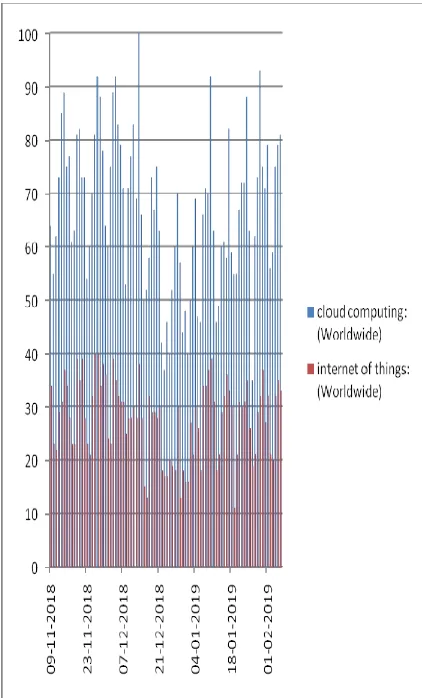
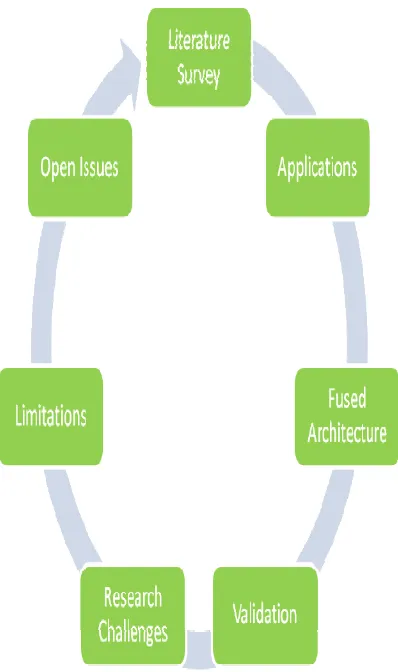
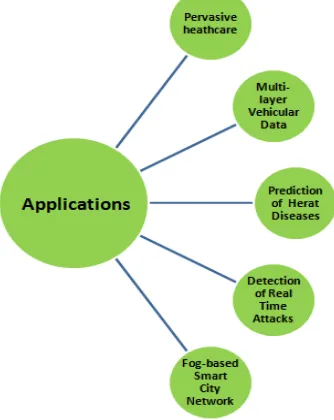
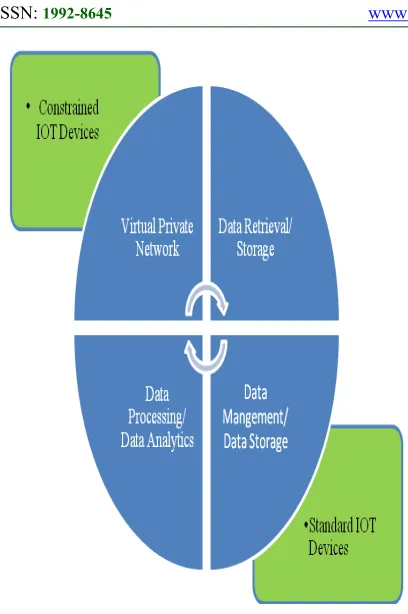
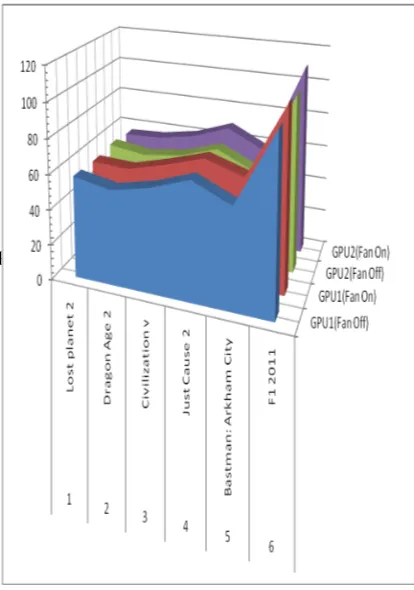
![Figure 7.Token and Access Delays comparison for proposed and existing [33] work for MQTT protocol](https://thumb-us.123doks.com/thumbv2/123dok_us/8900060.954524/8.612.89.312.61.680/figure-token-access-delays-comparison-proposed-existing-protocol.webp)